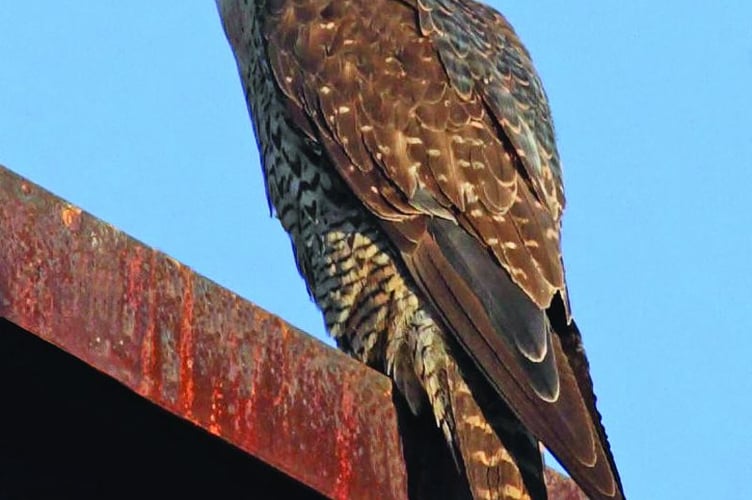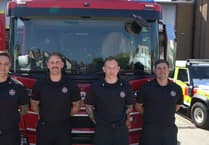PREPARE to be captivated – the peregrine falcons nesting in Woking town centre have four hungry mouths to feed, as all their eggs have hatched, writes Royer Slater.
I spent a happy hour, or perhaps longer, last weekend peeping at the proud parents as they fed their chicks, as broadcast by the webcams installed in and around their nest.
Thanks to these cameras, we can all view the action live on the internet. You can even hear the chicks chattering as the adults bring them their food.
Peregrines were on the brink of extinction in the 1960s, at least in lowland England. But these spectacular birds have settled in Woking and graced the skies above the town centre for the past 15 years.
Five years ago, the Woking Peregrine Project (WPP) installed a nesting box on a ledge near the top of Export House, which was formerly know as the BAT Building and was the highest in town before the Victoria Square tower blocks went up.
Peregrines soon discovered this cosy nook and have raised families there every year since.
Woking Borough Council is a key partner to the WPP, as owner of the building where they live and as a part of its support for local biodiversity through Natural Woking.
The council’s green infrastructure manager, Tracey Haskin, said: “Until this year, we had been fortunate to have the same peregrine pair visiting.

“Sadly, last summer the resident female was found dead. When a pair was seen around the nest box earlier this year, the volunteers believed both were new to Woking. Recently, it was discovered that the original male is back, with a new female.”
WPP volunteer Craig Denford reported his happiness that it is the original male on the WPP Twitter feed, @wokingperegrine: “Good to know he stuck around and has a second chance at happiness.”
Peregrines are birds of prey, feeding on medium-sized birds and small mammals. You can sometimes see the remains of their prey around the nest box in the webcam pictures. While viewing the live feed, you may be lucky to see the parents arriving with a new feast for their brood.
The peregrine is similar in size to the crow, and the largest resident falcon in the British Isles. It was traditionally found on sea cliffs and upland crags. Peregrines are renowned for their speed, and they can reach more than 200mph when diving to pounce on prey. This makes the peregrine the fastest member of the animal kingdom in the UK.
Surrey Wildlife Trust’s living landscapes manager, Mike Waite, explained that the fall in peregrine numbers has been partly due to pesticides in the food chain causing their eggshells to become thinner and more fragile.
Peregrines were also at one time widely persecuted by gamekeepers on sporting shoots and even racing bird owners – in fear that they would kill birds such as pheasants, grouse and pigeons.
“The recovery is in large part down to their relatively recent colonisation of high-rise buildings in urban, semi-urban and dock-side locations,” said Mike. “To a peregrine, this is a good substitute for their natural habitats of cliff faces and crag sites.”
Improved legal protection has also helped the birds to recover. They are a Schedule 1 listed species of the Wildlife and Countryside Act but are still poisoned and shot, and their eggs and chicks are taken by collectors and for falconry training.
Mike added: “Peregrines that nest in places like Woking town centre are probably in the safest locations these days. The birds can be more easily monitored and are often protected by the building’s security systems.
“They are valued here not only for their sheer beauty and novelty, but also as a ‘nature-based’ solution to over-population by urban pigeons and the problems they cause through their droppings and even avian disease-transmission.”
Watch the natural drama of the life of our local peregrine family continue to unfold – the chicks continuing to grow, being taught how to fly and hunt and eventually leaving home – at www.wokingperegrines.com. For updates on Twitter, follow @wokingperegrine.




